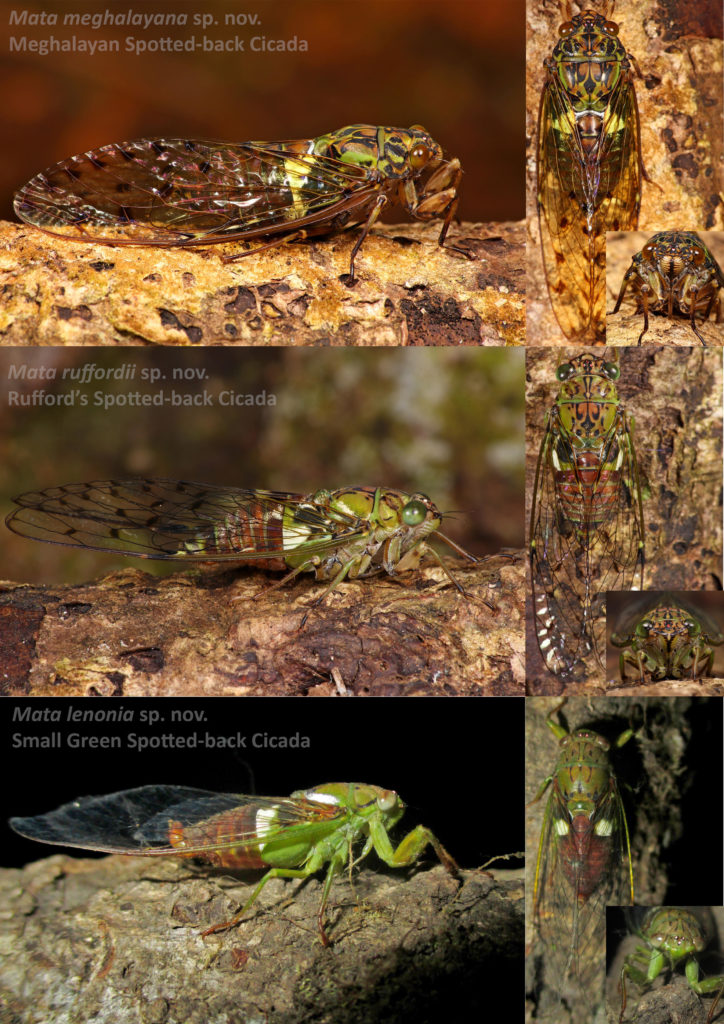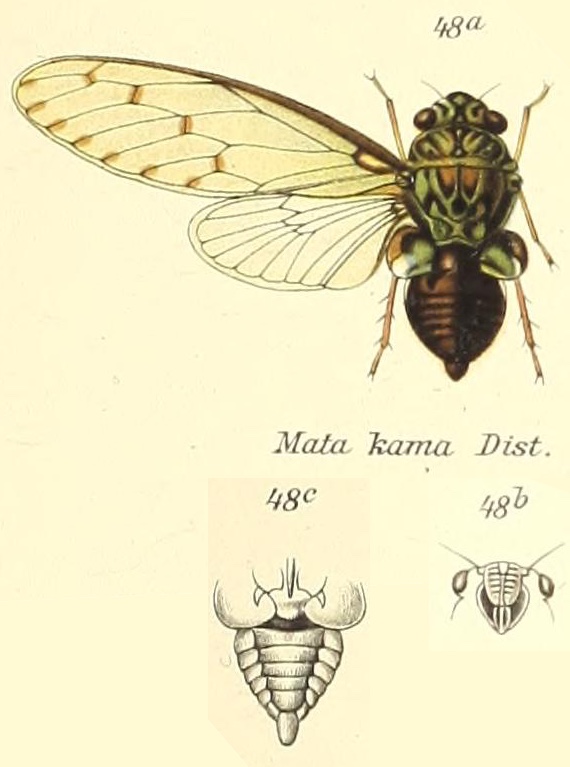Three new species of cicadas have been discovered in Meghalaya, India:
Mata meghalayana, Mata lenonia, and Mata ruffordii.

Photo courtesy of Vivek Sarkar.
Access the paper on Research Gate or Zootaxa Vol 4908, No 1.
Paper title: Description of three new species of the genus Mata Distant, 1906 (Hemiptera: Cicadidae: Cicadinae: Oncotympanini) with notes on their natural history from the Indian state of Meghalaya, India
Authors: Vivek Sarkar, Cuckoo Mahapatra, Pratyush P. Mohapatra, Manoj V. Nair, Krushnamegh Kunte
Abstract: “Three new species of the Asian genus Mata Distant, 1906 (Hemiptera: Cicadidae) viz. Mata lenonia sp.nov.; Mata ruffordii sp.nov. and Mata meghalayana sp.nov. are described from the Indian state of Meghalaya. Keys and taxonomic descriptions of these species are provided with detailed accounts of their natural history and acoustics.”

